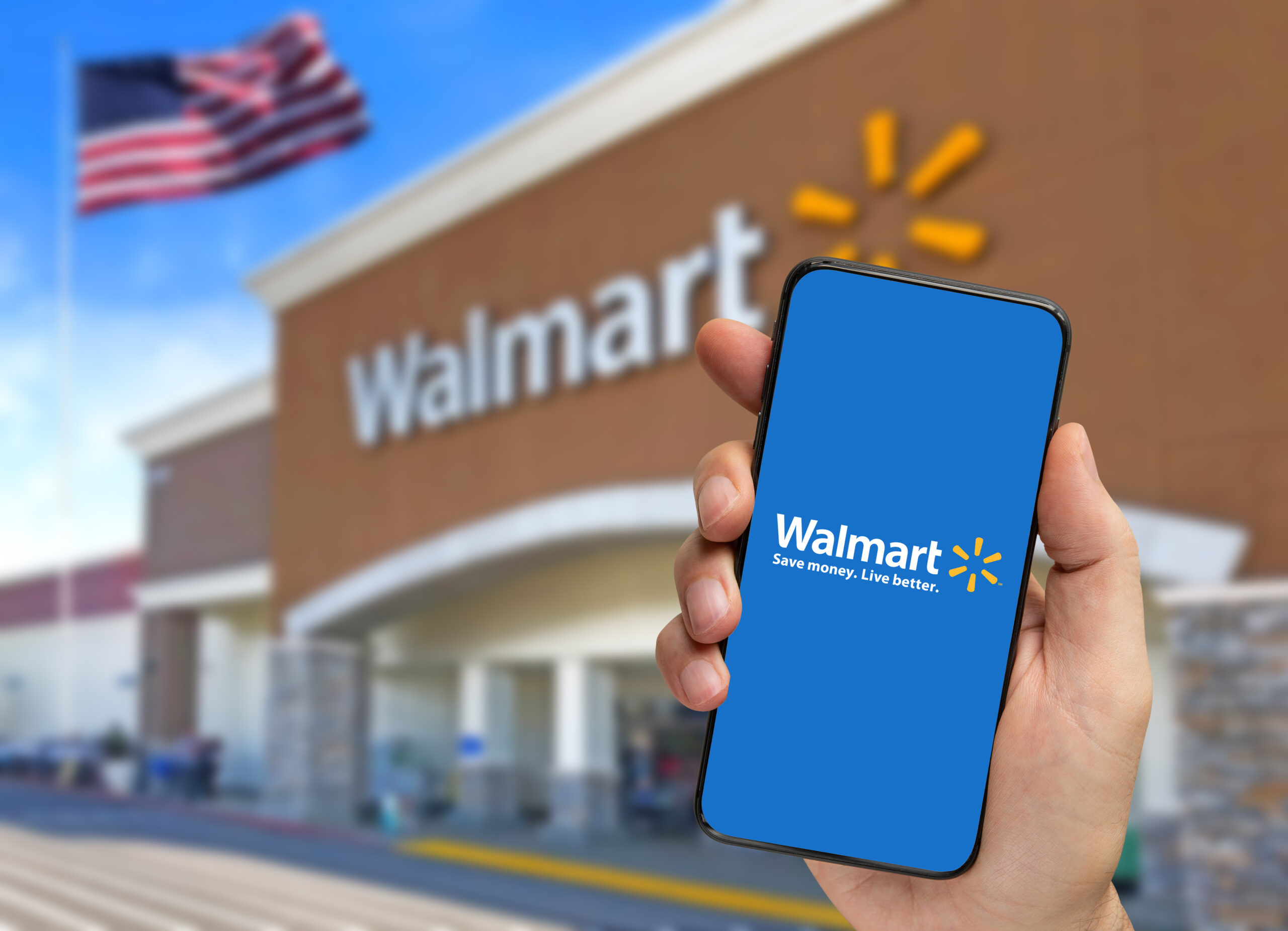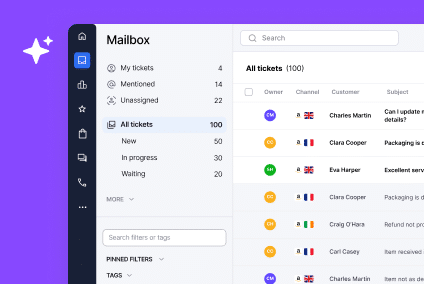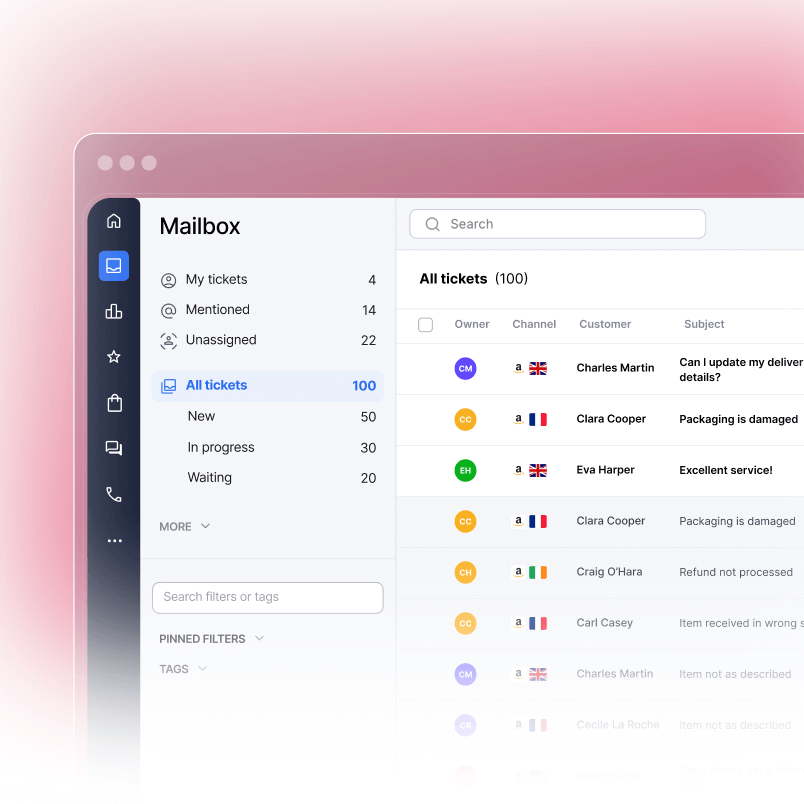How do Walmart fulfillment integrations actually speed up delivery and growth? The short answer is that they connect your messages, orders, tracking, and policies in one place, then use automation to keep the clock in your favor. Do that well and Walmart fulfillment gets faster, your SLAs stay healthy, and support stops feeling like a neverending whack-a-mole.
This guide shows where the time savings come from, how to wire in automation without adding chores, and how teams turn those gains into omnichannel growth.
What is Walmart fulfillment and why do integrations matter?
Walmart fulfillment is everything between a shopper hitting buy and a package arriving on time. The bottlenecks are familiar: missing order context when a buyer writes in, manual copy and paste for tracking, and slow handoffs between support and ops. Walmart fulfillment integrations reduce that friction by gathering messages, orders, and tracking in one place so agents can reply in context and move tickets forward without tab hopping.
When a buyer asks “Where’s my order?” the best answer includes live status, an ETA, and the next step. With a connected setup, you don’t hunt for the carrier page or a spreadsheet. The reply pulls those details straight into the message. That single change cuts handle time and keeps momentum across hundreds of similar tickets.
You’ll see the biggest lift when the same system routes work, fills in order fields automatically, and nudges agents before SLAs are at risk. That mix of Walmart support automation and clear ownership makes Walmart fulfillment feel predictable, even on busy days.
How do integrations cut time from “order placed” to “order delivered”?
Think through the journey and remove the friction at each step.
Order and payment captured
Create a rule that tags order confirmation questions and serves a pre-checked template with the order number and expected ship date. Most messages close on the first reply.
Pick, pack, and ship
Route “Where’s my order” to a shipping queue. Pull the tracking URL and current scan into the reply so buyers don’t need to ask twice. If the parcel stalls, trigger a proactive update.
Delivery and feedback
When tracking shows delivered, schedule a short satisfaction check. If the message is positive, send a light nudge that invites a quick review. If there’s a problem, route it to the right owner with the order context already attached.
Across all three stages, Walmart fulfillment integrations reduce clicks and handoffs. The less your team hunts for data, the faster Walmart orders move.
Steal this idea: Build three templates you’ll actually use every day: order confirmation, shipping update with live status, and return instructions with a pre-approved label. Load them with variables so they populate buyer name, order ID, carrier, and ETA.
What Walmart SLA targets should support plan around?
Walmart’s Seller Performance Standards call out response speed and tracking quality as core measures. Plan your workflows around them and you’ll stay on the front foot.
- Keep your Seller Response Rate above 95% by replying to buyer inquiries within 48 hours.
- Maintain a Valid Tracking Rate above 99% by providing valid tracking on every order.
Walmart highlights the 48-hour reply expectation and a 99% tracking threshold in its Seller Performance Standards. These are the guardrails your team should automate around.
Walmart also details shipping and fulfillment rules, including auto-cancelling orders not marked as shipped with tracking by the expected ship date plus four days.
When you tie your routing, timers, and templates to those numbers, Walmart SLA compliance becomes part of the workflow rather than a weekly scramble.
Where does automation help most in Walmart fulfillment?
Automation does the heavy lifting when volume spikes. Here’s where Walmart fulfillment AI and rules make the biggest dent:
1) “Where’s my order” at scale
- Auto-tag messages that include tracking or delivery keywords.
- Serve a reply that pulls in the live carrier status and ETA.
- If scans stall, trigger a proactive update so buyers don’t have to ask.
- Use sentiment flags so frustrated tones get bumped up the queue.
2) Returns without back-and-forth
- Detect common return reasons and attach the right label or steps automatically.
- Suppress review requests on any order with an open case.
- Schedule a short check-in after the issue is closed to confirm the fix.
3) Presales that keep carts alive
- Route fit or compatibility questions to a specialist.
- Use snippets that include SKU, availability, and a bundled alternative.
- Track conversion on answered presales to show impact.
4) SLA safety nets
- Alert at the 40- and 44-hour marks so threads don’t breach the 48-hour window.
- Flag high-risk SKUs that drive repeat contacts.
- Highlight orders without scans so ops can nudge carriers before the ESD buffer expires.
That combination of rules and Walmart support workflows keeps response time tight and accuracy high. It’s the practical side of Walmart fulfillment AI: faster, clearer answers with fewer clicks.
Walmart delivered eCommerce growth of 20%+ annually in both 2023 and 2024, and almost 1 in 5 Walmart sales is now via eCommerce, according to recent figures from Walmart.
How to connect Walmart logistics integration to omnichannel growth
Most sellers on Walmart also sell on Amazon, eBay, Shopify, or Mirakl. Fulfillment gets messy fast if each channel lives in a separate inbox with different rules. The fix is one view, one rulebook, and one set of reports.
Bring your channels into the same queue so every agent sees messages alongside orders and tracking. Reuse your rules for routing, templates, and timers. That way, your Walmart omnichannel growth doesn’t add new complexity. It shares the same backbone.
Link your planning to the bigger company context, too. Walmart keeps pushing convenience, delivery speed, and marketplace expansion, and it shows up in the numbers.
Walmart reported 22–23% global eCommerce growth in mid 2025, with marketplace and store-fulfilled delivery as key drivers, according to Q1 FY26 earnings figures.
Want a deeper look at operating a single hub across marketplaces? If omnichannel support is your next project, connect your channels to a view that your team can actually live in every day. You’ll get consistent answers and clean reporting without a second system to maintain.
Real-world proof points you can borrow
You don’t need a massive team to move faster. You need reliable plumbing and a few smart rules.
Right Deals UK responds 5× faster after centralizing support and has maintained a 97.6% positive marketplace rating. That’s what happens when order context and routing live in one place.
eCommerce momentum at Walmart includes faster delivery options and marketplace growth, with eCommerce up 22% globally, according to Walmart’s Q1 FY26 earnings data, and delivery in three hours or less reaching 95% of the US population soon, according to Business Insider.
Those are the kinds of results a grounded integration makes possible: faster replies, fewer misses, and better control as you grow.
What to remember and what to do next
Here’s a simple plan you can share in your next meeting:
Remember this
- Walmart fulfillment speeds up when messages, orders, tracking, and ownership live in the same place.
- Walmart fulfillment integrations earn their keep by cutting clicks and preventing SLA misses.
- Walmart support automation should cover first-reply acknowledgments, routing by intent, and timers that warn before the 48-hour window.
- A shared queue and consistent rules turn Walmart omnichannel growth into a clean handoff rather than a parallel process.
Do this next
- Connect your account so messages and orders flow into one view, then reuse the setup across channels for smoother omnichannel support.
- Map three Walmart support workflows you run daily: WISMO, returns, and presales. Add one rule and one template for each.
- Add timers for 40 and 44 hours to protect your Seller Response Rate and keep Walmart SLA compliance front and center.
- Draft five templates with variables: order confirmation, shipping update, delivery follow-up, return instructions, and partial refund options.
- Review stalled scans twice a day. If tracking doesn’t move, send a proactive update before the buyer writes in.
See how this looks in your queue and warehouse flow: Demo Walmart + eDesk integration and we’ll walk through Walmart fulfillment integrations, the automations that save the most time, and a quick plan to turn those wins into scale.
FAQs
How does Walmart fulfillment automation work?
It uses rules and AI to route messages by intent, fill in order and tracking fields automatically, and alert agents before the 48-hour threshold. The goal is simple: fewer clicks per ticket and fewer misses when volume spikes.
What tools speed up Walmart orders?
Start with a unified inbox connected to Walmart, templates with order variables, and timers tied to SLAs. Add proactive shipping updates for stalled scans and a short delivery follow-up to catch issues before they turn into cases.
What should we prioritize first in Walmart fulfillment integrations?
Centralize your queue, then add three automations: instant acknowledgments, routing for WISMO and returns, and 48-hour alerts. That trio protects your SRR while you build the rest.
How do we reduce “Where’s my order” volume?
Include live status and ETA in your first reply, schedule a proactive update if scans stall, and add a delivery confirmation touch. Buyers don’t need to chase when you communicate first.
How does this support omnichannel growth without extra tools?
Use one rulebook across channels. If a policy changes, you update it once. If a template needs a tweak, you change it in one place and every channel benefits.




